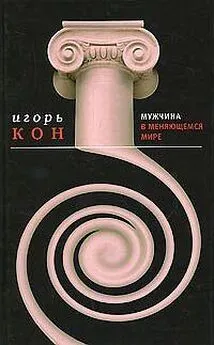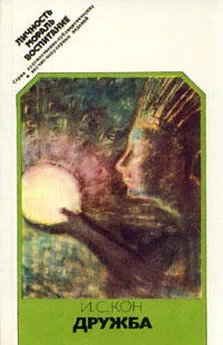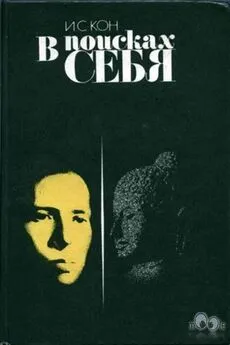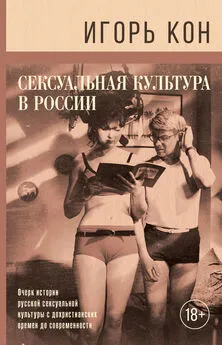Игорь Кон - Мальчик – отец мужчины
- Название:Мальчик – отец мужчины
- Автор:
- Жанр:
- Издательство:Время
- Год:2009
- Город:Москва
- ISBN:978-5-9691-0469-3
- Рейтинг:
- Избранное:Добавить в избранное
-
Отзывы:
-
Ваша оценка:
Игорь Кон - Мальчик – отец мужчины краткое содержание
Новая работа Игоря Кона развивает идеи, изложенные в его бестселлере «Мужчина в меняющемся мире». В конце XX в. человечество неожиданно обнаружило, что самым слабым звеном современного воспитания являются мальчики: они больше болеют, хуже учатся, чаще совершают преступления и рискованные поступки. Какова природа мальчишества как социокультурного явления? От чего зависят присущие или приписываемые мальчикам свойства? Всегда ли они одинаковы? Каково реальное положение мальчика в современной семье, школе и социуме? Каким он видит себя и свое тело? Как формируются и реализуются мальчишеские представления о мужественности? Каково приходится мальчикам, которые не могут или не хотят соответствовать предлагаемому нормативному канону? В каком направлении развивается современная гендерная педагогика? Обобщая данные мировых междисциплинарных исследований, ученый не дает педагогических рецептов, но его книга необходима каждому, кто готов думать над этими вопросами.
Мальчик – отец мужчины - читать онлайн бесплатно ознакомительный отрывок
Интервал:
Закладка:
Olweus D. Olweus' core program against bullying and antisocial behavior: A teacher handbook. Research Center for Health promotion (Hemil Center). Bergen, Norway. 2001. (Can be ordered from Dan Olweus at: 01weus@psyhp. uib. no).
Omark R. D., Omark M., Edelman M. Formation of dominance hierarchies in young children // Psychological Anthropology / R. T. Williams, ed. The Hague: Mouton, 1973.
OranskyM., MarecekJ. «I'm not going to be a girl». Masculinity and emotions in boys' friendships and peer groups // Journal of Adolescent Research. 2009. Vol. 24. P. 218–241.
Orme N. Medieval Children. Yale University Press, 2001.
Orwell G. Boys' Weeklies: Critical Essays. London: Seeker and Warburg, 1946. http://www.orwell.ru/library/essays/boys/ english/e_boys
Padilla-Walker L. U., Nelson L. J. et al. More than a just a game: video game and internet use during emerging adulthood // Journal of Youth Adolescence. 2009. 10. 1007/sl0964-008-9390-8.
Paglia C. Sexual Personae: Art and Decadence from Nefertiti to Emily Dickinson. New Haven: Yale University press, 1990.
Pampel F. C. Cigarette Diffusion and Sex Differences in Smoking. American Sociological Association, 2001.
Pampel F. C. Global patterns and determinants of sex differences in smoking // International Journal of Comparative Sociology. 2006. Vol. 47. P. 466–487.
Paolucci E. O., Violato C. A meta-analysis of the published research on the affective, cognitive, and behavioral effects of corporal punishment // Journal of Psychology. 2004. Vol. 138. P. 197–221.
PappasN. Т., McKenryP. С, CatlettB. S. Athlete aggression on the rink and off the ice: Athlete violence and aggression in hockey and interpersonal relationships // Men and Masculinities. 2004. Vol. 6. P. 291–312.
Parker A. The construction of masculinity within boys' physical education // Gender amp; Education. 1996. Vol. 8. P. 141–158.
Pawlowski В., Atwal R., Dunbar R. I. M. Sex differences in everyday risk-taking behavior in humans // Evolutionary Psychology. 2008. Vol. 6. P. 29–42.
Pedersen W., Samuelsen S. O., Wichtstroem L. Intercourse debut age: poor resources, problem behavior, or romantic appeal? A population-based longitudinal study // Journal of Sex Research. 2003. Vol. 40. P. 333–345.
Pellegrini A. D. Boy's rough-and-tumble play, social competence, and group composition // British Journal of Developmental Psychology. 1993. Vol. 11. P. 237–248.
Pellegrini A. D. Perceptions and functions of play and real fighting in early adolescence // Child Development. 2003. Vol. 74. P. 1522–1533.
Pellegrini A. D. The development and function of rough-and– tumble play in childhood and adolescence: A sexual selection theory perspective // Play and development / A. Goncu, S. Gaskins (Eds.). Mahwah, NJ: Erlbaum, 2006. P. 77–98.
Pellegrini A. D., Bartini M. Dominance in early adolescent boys: Affiliative and aggressive dimensions and possible functions // Merrill-Palmer Quarterly. 2001. Vol. 47. P. 142–163.
Pellis S. M. Sex differences in play fighting revisited: Traditional and nontraditional mechanisms of sexual differentiation in rats // Archives of Sexual Behavior. 2002. Vol. 31. P. 17–26.
Peplau L. A., Frederick D. A., Yee C. et al. Body image satisfaction in heterosexual, gay, and lesbian adults // Archives of Sexual Behavior. 2008. Aug. 19. [Epub ahead of print].
Peterson J., Duncan N, CanadyK. A longitudinal study of negative life events, stress, and school experiences of gifted youth // Gifted Child Quarterly. 2009. Vol. 53. P. 34–49.
Peterson J. S., Ray К. Е. Bullying and the gifted: Victims, perpetrators, prevalence, and effects // Gifted Child Quarterly. 2006. Vol. 50. P. 148–168.
Piper H., Powell J, Smith H. Parents, professionals, and paranoia: The touching of children in a culture of fear // Journal of Social Work. 2006. Vol. 6. P. 151–167.
Pihlakoski L., SouranderA., Aromaa M. et al. The continuity of psychopathology from early childhood to preadolescence: A prospective cohort study of 3-12-year-old children // Eur Child Adolesc Psychiatry. 2006. Vol. 15. P. 409–417.
PlummerD. Sportophobia. Why do some men avoid sport? // Journal of Sport and Social Issues. 2006. Vol. 30. P. 122–137.
Pollack W. S. Real Boys: Rescuing Our Sons From The Myths of Boyhood. New York: Random House, 1998.
Poynting S., Donaldson M. Snakes and leaders: Hegemonic masculinity in ruling-class boys' boarding schools // Men and Masculinities. 2005. Vol. 7. P. 325–346.
Preckel F., Goetz Т., Pekrun R., Kleine M. Gender differences in gifted and average-ability students comparing girls' and boys' achievement, self-concept, interest, and motivation in mathematics // Gifted Child Quarterly. 2008. Vol. 52. P. 146–159.
Premodern Teenager: Youth in Society 1150–1650 / Ed. by K. Eisenbichler. Toronto: Centre for Reformation and Renaissance Studies, 2002.
Pressler M. W. Bored with her toys: Makers see girls growing up faster, and wonder how to entertain them // Washington Post. 2006. April 2. F01.
Preuss L. J., Dubow E. F. A Comparison between intellectually gifted and typical children in their coping responses to a school and a peer stressor // Roeper Review. 2004. Vol. 26. P. 105–111.
Puts D. A., McDaniel M. A., Jordan СL., Breedlove S. M. Spatial ability and prenatal androgens: meta-analyses of congenital adrenal hyperplasia and digit ratio (2D:4D) Studies //Archives of Sexual Behavior. 2008. Vol. 37. P. 100–111.
РукеК. D. Class-based masculinities: The interdependence of gender, class and interpersonal power // Gender amp; Society. 1996. Vol. 10. P. 527–549.
Raven S. The Old School: A Study in the Oddities of the English Public School System. L.: Hamish Hamilton, 1986.
Ray К. E., Peterson J. S. Bullying among the gifted: The subjective experience // The Gifted Child Quarterly. 2006. Vol. 50. P. 252–269.
Reed Т., Brown M. H. The expressions of care in the rough and tumble play of boys // Journal of Research in Childhood Education. 2000. Vol. 15. P. 104–116.
Rees C. R., Howell F. W., Miracle A. W. Do high school sports build // Social Science Journal. 1990. Vol. 27. P. 303–315.
Renold E. Primary school «studs»: (De)constructing young boys' heterosexual masculinities // Men and Masculinities. 2007. Vol. 9. P. 275–297.
Reynolds M. D., Tarter R., Kirisci L. et al. Testosterone levels and sexual maturation predict substance use disorders in adolescent boys: A prospective study // Biol Psychiatry. 2007. Vol. 61. P. 1223–1227.
Rheingold H. L., Cook K. V. The contents of boys' and girls' rooms as an index of parents' behavior // Child Development. 1975. Vol. 46. P. 459–463.
Ricciardelli L. A., McCabe M. P. Children's body image concerns and eating disturbance: A review of the literature // Clinical Psychology Review. 2001. Vol. 21. P. 325–344.
Ricciardelli L. A., McCabe M. P., Ridge D. The Construction of the adolescent male body through sport // Journal of Health Psychology. 2006. Vol. 11. P. 577–587.
Richards J. Happiest Days: The Public Schools in English Fiction. Manchester: Manchester Univ. press, 1988.
Rimm S. Peer pressures and social acceptance of gifted students // The Social and Emotional Development of Gifted Children: What Do We Know? / M. Neihart, S. M. Reis, N. M. Robinson, S. M. Moon (Eds.). Waco, TX: Pruftock Press, 2002. P. 13–18.
Rolison M. R., Scherman A. College student risk-taking from three perspectives //Adolescence. 2003. Vol. 38. P. 689–704.
Rose A. J., Rudolph K. D. A review of sex differences in peer relationship processes: Potential trade-offs for the emotional and behavioral development of girls and boys // Psychological Bulletin. 2006. Vol. 132. P. 98–131.
Rosenberg M. Society and the Adolescent Self-Image. Princeton, N. J.: Princeton University Press, 1965.
Rosenberg F., Simmons R. Sex differences in self-concept in adolescence // Sex Roles. 1975. Vol. 1. P. 147–159.
Rosenblitt J. C, Soler H., Johnson S. E., Quadagno D. M. Sensation seeking and hormones in men and women: Exploring the link // Hormones and Behaviour. 2001. Vol. 40. P. 396–402.
Rowe R., Maughan В., Worthman С. М. et al. Testosterone, antisocial behavior, and social dominance in boys: pubertal development and biosocial interaction // Biol Psychiatry. 2004. Vol. 55. P. 546–52.
Ruble D. N., Martin C. L., Berenbaum S. A. Gender development // Handbook of Child Psychology. 6-th ed. Vol. 3. NY: Wiley, 2006. P. 858–932.
Rutter M, Caspi A, Fergusson D et al. Sex differences in developmental reading disability: New findings from 4 epidemiological studies // Journal of American Medical Association. 2004. Vol. 291. P. 2007–2012.
Ryan C, Huebner D., Diaz Rl. M., Sanchez J. Family rejection as a predictor of negative health outcomes in white and latino lesbian, gay, and bisexual young adults // Pediatrics. 2009. Vol. 123. P. 346–352.
SaarniC, CamposJ.J., CmrasL.A., WitheringtonD. Emotional development: Action, communication and understanding // Handbook of Child Psychology. 6-th ed. Vol. 3. NY: Wiley, 2006. P. 226–299.
Sak U. A synthesis of research on psychological types of gifted adolescents // Journal of Secondary Gifted Education. 2004. Vol. 15. P. 75–79.
Sandberg D. E., Bukowski W. M., Fung СM., Noll R. B. Height and social adjustment: Are extremes a cause for concern and action? // Pediatrics. 2004. Vol. 114. P. 744–750.
Santtila P., Sandnabba N. K., Jem P. Prevalence and determinants of male sexual dysfunctions during first intercourse // Journal of Sex amp; Marital Therapy. 2009. Vol. 35. P. 86–105.
Sargent P. Real men or real teachers? Contradictions in the lives of men elementary teachers // Men and Masculinities. 2000. Vol. 2. P. 410–433.
Schaal В., Tremblay R. E., Soussignan R., Susman E. J. Male testosterone linked to high social dominance but low physical aggression in early adolescence // J Am Acad Child Adolesc Psychiatry. 1996. Vol. 35. P. 322–330.
Schindler N. Les gardiens du desordre: Rites culturels de la jeunesse a l'aube des Temps modernes // Histoire des jeunes en Occident / Sous la dir. De Giovanni Levi et Jean-Claude Schmitt. T. 1–2. P.: Seuil, 1994. P. 277–329.
Schlegel A., Barry H. HI. Adolescent initiation ceremonies: Cross-cultural codes // Ethnology. 1979. Vol. 18. P. 199–210.
Schlegel A., Barry H. HI. Adolescence: An Anthropological Inquiry. NY: Free Press, 1991.
Schrader A. M. Languages of the Lash: Corporal Punishment and Identity in Imperial Russia. Illinois Univ. Press, 2002.
Schulz K, Stanford K., Wolke D., Woods S. Bullying and victimization of primary school children in England and Germany: Prevalence and school factors // British Journal of Psychology. 2001. Vol. 92. P. 673–696.
Schulz K. M., Sisk C. L. Pubertal hormones, the adolescent brain, and the maturation of social behaviors: Lessons from the Syrian hamster // Molecular and Cellular Endocrinology. 2006. Vol. 254–255 P. 120–126.
SelfhoutM. H. W., DelsingM. J. M. K, terBogt T. F. M., Meeus W. H. J. Problem behavior: A two-wave longitudinal study heavy metal and hip-hop style preferences and externalizing // Youth amp; Society. 2008. Vol. 39. P. 435–452.
Читать дальшеИнтервал:
Закладка:










